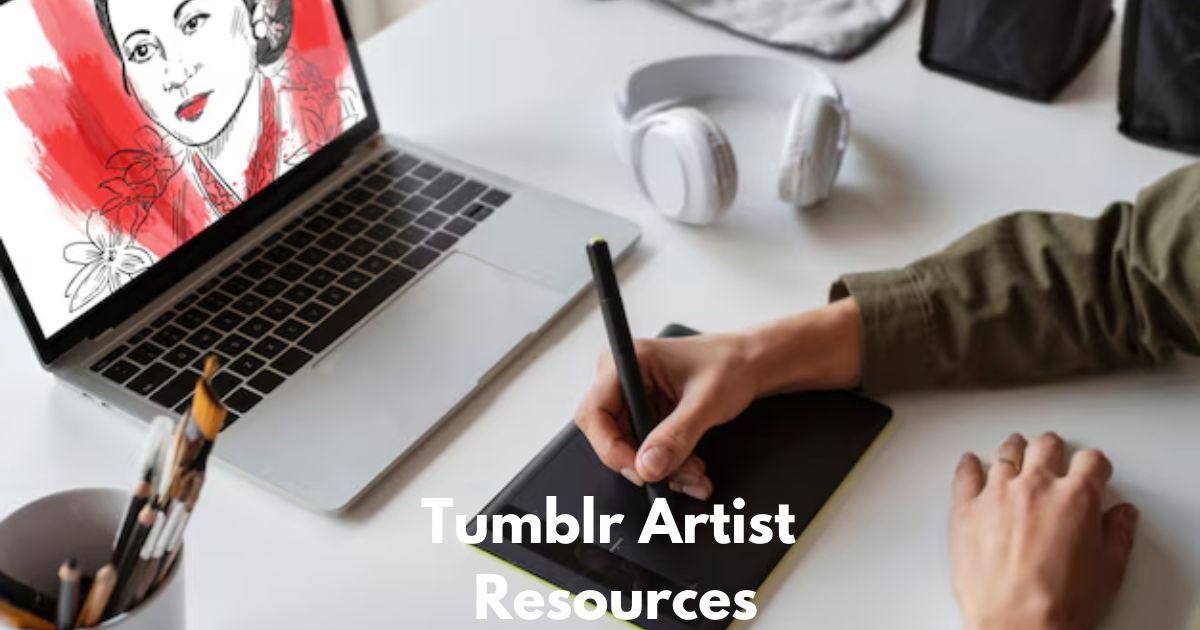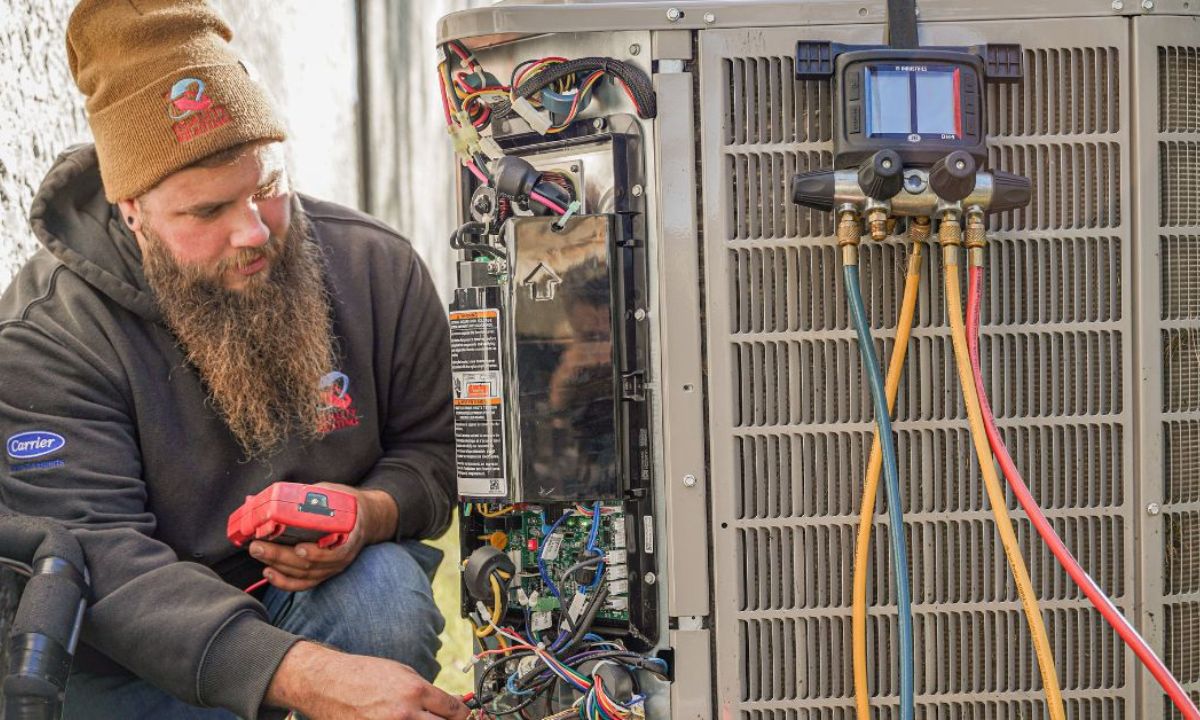General
Tumblr Artist Resources: Essential Tools and Tips for Creators

Tumblr has long been a haven for artists seeking to share their creations, connect with a like-minded community, and find inspiration. The platform’s blend of simplicity and visual appeal makes it an ideal space for creators. However, thriving on Tumblr requires more than just uploading artwork. Utilizing the right resources can make all the difference in growing your presence and engaging with your audience. In this article, we explore essential Tumblr artist resources to help you succeed as an artist on this dynamic platform.
Understanding Tumblr Artist Resources Unique Ecosystem
Tumblr isn’t just another social media platform; it’s a microblogging space that emphasizes creativity and individuality. Artists on Tumblr Artist Resources benefit from its reblog feature, which allows work to circulate widely, reaching audiences far beyond an initial post’s followers. This viral potential makes it a unique place for artists, but success depends on understanding how to engage effectively with its community-oriented ecosystem.
Customizing Your Tumblr Blog for Artistic Appeal
Your Tumblr blog serves as your portfolio. Customization is crucial to making it visually striking and memorable. Start by selecting a theme that complements your artistic style. Tumblr offers a variety of free and premium themes, many of which are tailored for art and visual content. Choose layouts that highlight your artwork with minimal distractions. Personalizing your blog’s colors, fonts, and navigation further ensures it reflects your artistic identity, helping visitors immediately connect with your work.
Tagging Strategies to Maximize Visibility
Tags are one of Tumblr Artist Resources most powerful features for artists. They help your posts appear in search results and on user dashboards. Strategic tagging ensures that your content reaches the right audience. Include tags that describe the medium, style, subject matter, and emotions depicted in your art. Popular tags like #digitalart, #sketches, or #illustration can boost visibility, but combining these with niche tags specific to your art ensures it doesn’t get lost in the crowd.
Utilizing Tumblr Communities for Collaboration
Tumblr Artist Resources communities, often formed around shared hashtags or fandoms, provide excellent opportunities for collaboration. Joining art challenges or contributing to fandom-specific art can significantly expand your reach. These communities value participation and originality, making them ideal spaces to exchange ideas, gain feedback, and build connections with other creators.
Building an Engaging Content Schedule
Consistency plays a significant role in building an audience on Tumblr Artist Resources. Posting regularly keeps your audience engaged and attracts new followers. Consider creating a content schedule that balances new artwork, behind-the-scenes sketches, and reblogs of content that resonates with your style. Engaging captions and personal notes can further humanize your posts, making them more relatable to your audience.
Taking Advantage of Tumblr’s Queue Feature
Tumblr Artist Resources queue feature is a lifesaver for artists managing busy schedules. It allows you to schedule posts in advance, ensuring a steady flow of content even during hectic periods. By maintaining a regular posting frequency, you can keep your audience engaged and your blog active without constant manual updates.
Interactive Features to Foster Audience Engagement
Engagement on Tumblr Artist Resources goes beyond likes and reblogs. Use the platform’s interactive features, such as asks and polls, to foster meaningful connections with your audience. Encouraging followers to ask questions about your process or preferences can spark insightful conversations. Similarly, hosting polls on what to draw next or which artwork resonates most with your audience adds an interactive layer to your blog.
Leveraging Analytics to Understand Your Audience
Tumblr Artist Resources built-in analytics provide valuable insights into your blog’s performance. By monitoring metrics like notes, follower growth, and engagement rates, you can understand what content resonates most with your audience. Use this data to refine your content strategy, focusing on the types of artwork and posts that generate the most interaction.
Sourcing References and Inspiration Through Tumblr
One of the greatest advantages of Tumblr Artist Resources is its vast library of creative content. Use the platform to curate references and gather inspiration from other artists. Following blogs dedicated to your artistic interests or exploring popular art-related tags can keep your ideas flowing. Be sure to credit any references you use in your work to maintain professionalism and respect within the community.
Learning From Established Tumblr Artists
Successful Tumblr artists offer a wealth of lessons for aspiring creators. Study their blogs to understand how they present their work, interact with followers, and utilize the platform’s features. Many seasoned artists also share tutorials and tips, providing valuable insights into improving your craft and navigating Tumblr effectively.
Monetizing Your Art on Tumblr
Tumblr Artist Resources can be a stepping stone for monetizing your art. While the platform doesn’t offer direct monetization options, it’s an excellent tool for driving traffic to external platforms like Patreon, Etsy, or Ko-fi. Include links to your shop or donation pages on your blog, and consider offering exclusive content or commissions to your Tumblr followers.
Avoiding Common Pitfalls o#n Tumblr
While Tumblr offers incredible opportunities for artists, it’s not without challenges. Oversharing personal details or engaging in toxic discourse can harm your reputation. Additionally, overusing tags or neglecting to credit inspirations can alienate followers. Maintaining a balance between professional presentation and genuine interaction is key to long-term success.
Using Tumblr for Long-Term Artistic Growth
Tumblr’s role in an artist’s career goes beyond exposure. The platform fosters creative growth by encouraging experimentation, feedback, and collaboration. Use your time on Tumblr not only to build a following but also to refine your skills and explore new artistic directions.
Celebrating Your Artistic Journey on Tumblr
Above all, Tumblr is a space to celebrate your unique artistic voice. Share your successes, acknowledge your growth, and embrace the feedback and encouragement from your followers. By treating Tumblr as both a creative outlet and a community, you can make it a cornerstone of your artistic journey.
Conclusion
Tumblr artist resources are vital tools for creators aiming to maximize their potential on the platform. By understanding its ecosystem, customizing your blog, engaging with the community, and leveraging analytics, you can build a thriving presence. Whether you’re just starting out or looking to enhance your Tumblr strategy, these resources can help you navigate the platform effectively and grow as an artist.
FAQs
How often should artists post on Tumblr?
Consistency matters more than frequency. Posting 2–3 times a week with a mix of original content and reblogs is a good starting point.
Can I use Tumblr to sell my art?
Yes, but indirectly. Link to your shop or donation pages like Patreon or Ko-fi to monetize your art.
What are the best tags for artists on Tumblr?
Tags like #art, #illustration, #digitalart, and niche-specific tags related to your content are effective for visibility.
Is Tumblr suitable for beginners in art?
Absolutely. Tumblr’s community is welcoming to artists of all skill levels, making it a great place to learn and grow.
How can I gain more followers on Tumblr?
Focus on consistent posting, engaging with the community, using strategic tags, and maintaining a visually appealing blog.
General
Common HVAC Problems That Require Professional Technician Attention

Maintaining a comfortable indoor environment is largely dependent on the performance of your HVAC system. When heating, ventilation, or air conditioning units start to malfunction, it can lead to discomfort and potential damage to your home’s infrastructure. While homeowners can handle some minor issues, many HVAC problems need the careful attention of a trained technician to ensure safety, efficiency, and long-term system health. We will explore some of the most frequent issues that signal the need for professional intervention and how addressing them promptly can save time, money, and frustration.
Common HVAC Issues That Need Professional Help
- Inconsistent Temperature or Poor Airflow
When your HVAC system struggles to maintain a consistent temperature throughout your home, or if certain rooms feel warmer or cooler than others, it often points to airflow problems. This can stem from clogged air filters, blocked vents, or ductwork that has developed leaks or disconnections. Restricted airflow forces the system to work harder, which can lead to premature wear and increased energy costs. While changing air filters is a straightforward task, diagnosing duct leaks or balancing airflow typically requires a local HVAC technician team with tools designed to locate hidden issues and restore proper air circulation.
- Unusual Noises From the System
Strange noises, such as grinding, squealing, banging, or rattling, coming from your HVAC unit are often signs of mechanical trouble. These sounds can indicate worn bearings, loose components, or motor problems. Ignoring these noises can lead to severe damage, such as a motor burnout or broken fan blades. Professional technicians are equipped to open the unit safely, identify the source of the noise, and perform necessary repairs or part replacements. Addressing noisy HVAC systems early helps avoid costly breakdowns and maintains a quieter, more comfortable home environment.
- Frequent Cycling On and Off
If your heating or cooling system is turning on and off more frequently than usual, this short cycling can signal underlying problems. Short cycling not only reduces system efficiency but also increases wear on key components. Causes can range from a malfunctioning thermostat and refrigerant issues to an oversized HVAC unit for your home. Diagnosing why the system cycles improperly requires technical knowledge and specialized diagnostic tools. Professional technicians can adjust system settings, check refrigerant levels, or recommend equipment modifications to restore smooth, energy-efficient operation.
- Refrigerant Leaks
For air conditioning units and heat pumps, refrigerant is vital for absorbing and removing heat. A leak in the refrigerant lines can cause the system to underperform or stop cooling altogether. Low refrigerant levels not only reduce efficiency but can also cause damage to the compressor, a costly component to replace. Since handling refrigerants requires careful procedures and certifications, identifying and repairing leaks should always be left to a professional technician. Attempting to top off refrigerant without fixing leaks is a temporary and ineffective solution that can worsen the problem.
- System Not Turning On
When your HVAC system fails to start, it can be frustrating, especially during extreme weather conditions. Causes of a no-start condition include electrical issues such as tripped breakers, blown fuses, faulty wiring, or problems with the thermostat. Other mechanical failures, like a defective motor or capacitor, can also prevent the unit from powering up. Working with electrical components can be hazardous, and misdiagnosing the problem may cause further damage. A professional technician has the experience to safely troubleshoot electrical circuits and mechanical parts, ensuring a proper and safe repair.
- Excessive Energy Bills
If your energy bills suddenly spike without a clear reason, a malfunctioning HVAC system may be to blame. Inefficient operation caused by clogged filters, failing components, or duct leaks forces the system to run longer and consume more electricity or gas. While regular filter replacement and simple maintenance can help, a thorough inspection is often necessary to identify hidden issues that degrade efficiency. Professional technicians can perform comprehensive evaluations, recommend necessary repairs, and help optimize your system to reduce energy consumption and save money in the long run.
- Poor Indoor Air Quality
Your HVAC system plays a crucial role in circulating clean air throughout your home. If you notice increased dust, unpleasant odors, or humidity issues, it might be due to dirty filters, mold growth in ducts, or problems with the ventilation system. Such conditions can affect health, especially for individuals with allergies or respiratory issues. Professionals can perform detailed cleaning, inspect ventilation pathways, and install air purification devices if needed. Proper maintenance of the system not only improves comfort but also contributes to a healthier indoor environment.
- Water Leaks and Moisture Issues
Water leaking around your HVAC system or excessive condensation inside your home may indicate clogged drain lines or issues with the condensate pump. These leaks can lead to water damage, mold growth, and reduced system efficiency. Homeowners may notice puddles near the indoor unit or damp spots on walls and ceilings. Professional technicians are trained to clear clogged drain lines, repair or replace pumps, and identify and address any related issues. Ignoring water leaks can lead to serious home damage and expensive repairs.
Many HVAC problems may appear minor, but often indicate more serious issues that need professional attention. From airflow difficulties and unusual noises to refrigerant leaks and electrical malfunctions, these conditions necessitate thorough diagnosis and repair. Working with a trained technician not only restores your system’s performance but also helps prevent costly future breakdowns. Maintaining your HVAC system in good condition is crucial for maintaining a comfortable and healthy indoor environment year-round.
ALSO READ: What to Feed Seahorses in a Tank: A Complete Nutritional Guide
General
What to Feed Seahorses in a Tank: A Complete Nutritional Guide

Seahorses are some of the most fascinating and elegant creatures in the saltwater aquarium hobby. With their upright posture, curling tails, and peaceful demeanor, they bring a sense of calm and beauty to any marine setup. But unlike many other saltwater fish, seahorses have unique dietary needs. If you’re wondering what to feed seahorses in a tank to keep them healthy and thriving, you’re in the right place.
In this comprehensive nutritional guide, we’ll explore the best foods for seahorses, feeding schedules, tips for maintaining water quality, and how to ensure your seahorses are getting the nutrients they need to live a long, healthy life.
Understanding Seahorse Feeding Habits
In the wild, seahorses are ambush predators. They use their long, tube-like snouts to suck up small crustaceans like copepods and mysids from the water column. Because they don’t have stomachs, seahorses must eat frequently to get enough nutrition—they digest food quickly and need to consume multiple small meals throughout the day.
When kept in a tank, this natural feeding behavior must be replicated as closely as possible.
What to Feed Seahorses in a Tank
The best approach to seahorse nutrition involves a combination of frozen and live foods, depending on their species, size, and environment. Here are the most common and nutritious foods you should consider:
🦐 1. Frozen Mysis Shrimp (Primary Food Source)
Frozen mysis shrimp is the gold standard when deciding what to feed seahorses. It is high in protein and resembles the natural prey seahorses eat in the wild.
- Choose high-quality mysis shrimp from trusted brands.
- Enrich it with vitamins like Selcon or garlic extract to boost immunity.
- Rinse thoroughly before feeding to reduce phosphate build-up.
🐟 2. Live Brine Shrimp (Occasional Treat)
While not nutritious enough to be a staple, live brine shrimp can be used as a treat or to stimulate eating in picky seahorses.
- Gut-load them with nutritious additives before feeding.
- Ideal for newly introduced or recovering seahorses.
🐛 3. Copepods and Amphipods
Tiny, protein-rich crustaceans that closely mimic natural food.
- Great for dwarf seahorses and juveniles.
- Best offered live in a refugium or as a tank supplement.
🧫 4. Enriched Plankton and Microfauna
In reef-style seahorse tanks, naturally occurring microfauna like plankton or rotifers provide added nutrition.
- Promote natural grazing behavior.
- Contribute to a balanced tank ecosystem.
How Often to Feed Seahorses
Because of their fast metabolism, seahorses should be fed multiple times a day. A good rule of thumb is:
- Juveniles: 3–5 small feedings per day.
- Adults: 2–3 feedings per day.
Spread feedings throughout the day and observe your seahorses to ensure each one is getting its fair share. Uneaten food should be removed promptly to prevent water quality issues.
Feeding Techniques and Tools
Feeding seahorses in a tank requires patience and sometimes creativity. Here are a few techniques that work well:
🧽 Feeding Stations
Set up a dedicated area in the tank (like a small dish or shell) where food is consistently placed. Seahorses quickly learn to visit the station at feeding time.
🌊 Target Feeding
Use a turkey baster or pipette to gently place food near the seahorses, reducing competition and ensuring direct delivery.
🧼 Post-Feeding Cleanup
Always remove uneaten food within 20–30 minutes. Decaying shrimp and other food particles can spike ammonia levels and compromise your tank’s health.
Supplementation and Gut-Loading
Enriching your seahorses’ diet is key to preventing illness. Use vitamin supplements like:
- Selcon: Omega-3 and vitamin boost
- Garlic extract: Enhances appetite and boosts immunity
- Multivitamin gut-loads: For live food enrichment
Gut-loading means feeding live food with supplements before offering them to your seahorses, increasing the nutritional value.
Common Feeding Problems (and How to Solve Them)
Some seahorses can be finicky or go off food due to stress or illness. Here are a few quick tips:
- New Seahorse? Start with live food to stimulate interest.
- Won’t Eat Frozen? Try moving it in the water to mimic live prey.
- Stress in Community Tank? Separate your seahorses during feeding.
- Water Quality Issues? Overfeeding often causes spikes—monitor ammonia and nitrates closely.
The key to solving feeding issues is consistency and close observation.
Conclusion: Feed with Care and Purpose
Knowing what to feed seahorses is only part of the journey. Understanding their behavior, feeding them consistently, and maintaining a clean, stress-free tank are all critical to their health.
With proper nutrition and care, your seahorses can live for many years, rewarding you with their beauty, grace, and fascinating interactions. For high-quality seahorse food, care guides, and healthy marine life, visit Foxy Saltwater Tropicals—your trusted partner in marine aquarium success.
General
Advantages of Utilizing OEM Parts Compared to Aftermarket

In the context of vehicle repair or replacement, drivers and mechanics are confronted with one of the biggest decisions regarding whether to use OEM (Original Equipment Manufacturer) parts or aftermarket parts. Although available extensively, OEM parts have a better quality, compatibility, and long-term value compared to the latter. These differences aid vehicle owners in making informed choices towards the performance and longevity of their vehicles.
Warranty Compatibility with Your Car
One of the main reasons to go with OEM parts is warranty compatibility. These parts are made by the same company that constructed the original car, so they will fit perfectly and operate as they are supposed to without any need for modification, unlike some after-market parts which can be guesswork-dependent.
Ideal compatibility saves time on installation and eliminates the possibility of mechanical failure, particularly in sophisticated systems such as engines, transmissions, and suspension parts.
Consistent Performance
OEM components are manufactured to comply with high quality standards of the vehicle’s maker. Each component undergoes extensive testing to ensure it matches the original performance, reliability, and safety criteria. So you can count on consistent and smooth operation if you replace any component with an OEM one.
Aftermarket parts differ in quality, even among brands, which presents risk. Lower-quality made alternates could wear prematurely, create extra damage, or fail under extreme driving conditions.
Warranty and Manufacturer Support
OEM parts are standalone and usually come with a warranty supported by the manufacturer. This is reassuring in the event that the part malfunctions early or starts causing more problems than expected. Even some vehicle warranties will necessitate the use of OEM parts to sustain coverage.
Aftermarket parts may not have such stringent protection, and warranty conditions vary broadly with brand or supplier. OEM choice guarantees you to remain in line with service contracts and minimize surprise costs in the future.
Increased Resale Value of the Vehicle
Keeping your car with OEM parts ensures it remains in like-new condition. It is particularly noteworthy for new vehicles or high-end cars. When selling or trading the car, buyers tend to consider OEM-maintained vehicles as more reliable and valuable.
Service records that include OEM replacements make the car more credible and might sell for a higher resale value. Alternatively, widespread usage of aftermarket pieces might be a point of concern for dealers or potential buyers.
Long-Term Cost Effectiveness
OEM parts, though they may cost a little more in the short term, tend to be cheaper in the long term. They are more durable and compatible with systems, so replacements and repairs that are frequent due to shoddy installations are minimized.
One of the most important advantages of OEM components versus aftermarket components is lesser risk of future mechanical breakdown and labor expense. Quality OEM pieces prolong system life and avoid chain reactions that harm associated parts.
Specialized platforms such as Linkhouse can assist consumers and companies in sourcing reputable OEM components and remaining current on industry standards and vehicle-specific solutions.
Maintains Original Driving Experience
OEM components keep the driver’s experience as originally designed by the manufacturer. From engine performance and brake responsiveness to suspension comfort, each OEM part is designed to preserve the original feel and operation of the vehicle.
Aftermarket components can alter how a vehicle handles or responds, sometimes in an adverse manner that affects safety or comfort.
Improved Fit and Finish for Exterior Components
For body panels, headlights, mirrors, and interior trimmings, OEM parts provide an exact fit in terms of dimensions, color, and quality. This is critical in maintaining the appearance of the vehicle following repairs, particularly after an accident.
On the contrary, aftermarket body parts tend to be slightly off in shape or finish, leading to uneven gaps and mismatched paint, which compromises aesthetic appeal.
Final Thoughts
Understanding the benefits of using OEM parts over aftermarket options can lead to better performance, greater reliability, and stronger long-term value for your vehicle. From guaranteed fit and quality to improved resale potential, OEM parts deliver peace of mind and a true return on investment. By choosing the right components, vehicle owners can ensure safety, efficiency, and satisfaction every time they hit the road.
-

 Sports4 months ago
Sports4 months agoThe Ultimate Guide to Ski and Snowboard Equipment, Ski Equipment Rental, and Snowboard Equipment Rental
-

 Entertainment8 months ago
Entertainment8 months agoHulu Error Code Rununk13: A Complete Guide
-

 General7 months ago
General7 months agoStart-094: Unlocking Its Secrets and Understanding Its Power
-

 Entertainment6 months ago
Entertainment6 months agoSoaper.tv: A Comprehensive Guide to Your Streaming Companion
-

 Games5 months ago
Games5 months agoPizza Edition Games: The Ultimate Guide to Fun and Flavor
-

 Uncategorized5 months ago
Uncategorized5 months agoOceanofPDF: Free eBooks Source or Copyright Violation?
-

 Technology8 months ago
Technology8 months agoWhy SBCodez is the Go-To Resource for Aspiring Coders
-

 Apps8 months ago
Apps8 months agoWeb & Store Synergy: The Ultimate Guide to Blogging for E-commerce
